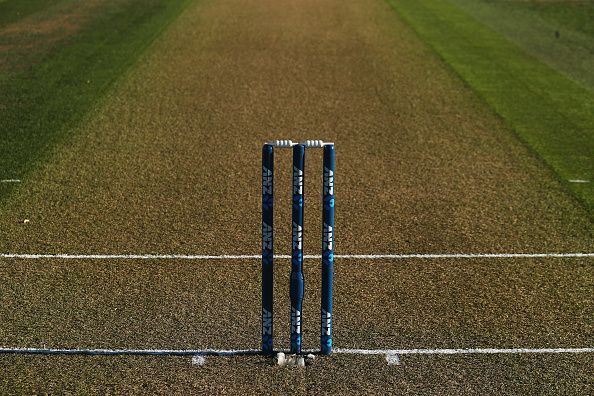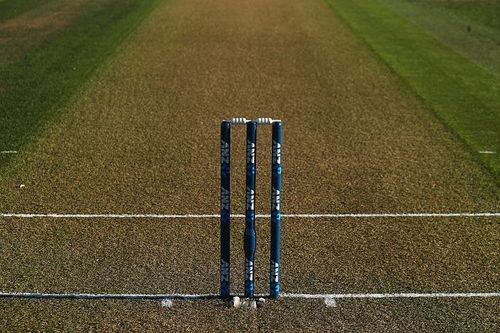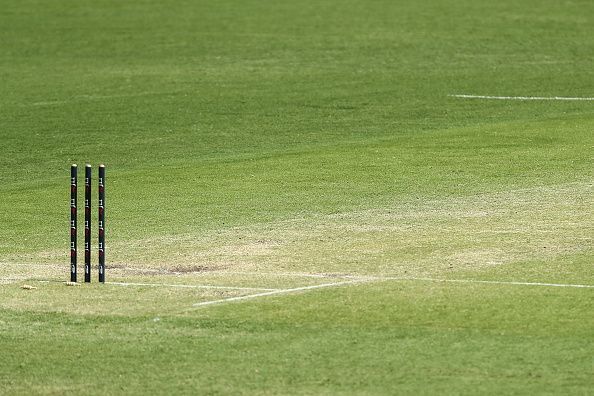
Curators doing their bit to improve India's away record

Gone are the days when India travel abroad and play on green tracks without having any experience of how to play on them. Over the last few years, the nature of tracks in the domestic circuit has come under scrutiny after BCCI's decision to play at neutral venues in a bid to create sporting tracks across the country.
Tamil Nadu's BCCI certified curator Karthikeyan believes that a lot has changed in the last few years and the statement that you cannot prepare green tracks in India is a myth. Speaking to Sportskeeda on the sidelines of a TNPL game at Dindigul, he explained what goes into creating a pitch, the importance of soil and also about BCCI's measures to improve the quality of pitches in India.
"If you see the Ranji Trophy and Vijay Hazare matches in the last five years, you can see a big variation. The first-class games are important and integral to the selection of players for the Indian side and you can see that green tracks are being made across the country in the last two years similar to the pitches in England, Australia, and New Zealand," he says.
When asked about how difficult it is to prepare green tracks in India and the lack of such pitches, Karthikeyan is quick to point out that a lot has changed in the last five years. The variety of pitches on offer has only increased and that is thanks to the emphasis from the BCCI on educating the curators about various methods and techniques.
He also adds that the addition of more enlightened minds has helped the cause as well, citing the example of people who have done a doctorate on soil and studied about it, entering the fray and improving the overall standard of curators in the country.
Format decides the nature of the pitch

But creating pitches for first-class games is markedly different from the ones used in the IPL or TNPL and Karthikeyan admits that the "format of the game decides the nature of the wicket".
Speaking particularly about the types of pitches used in the shortest format of the game, he says, "In T20s, you need the batsmen to flourish and have big scores but also need the chasing team to have a chance of overhauling the score as you need to attract the crowd and provide some entertainment in the shortest format of the game. The pitch is flattened so that it is a sporting field and both teams have a good chance of winning."
Irrespective of the format of the game, the soil is the main criteria for preparing pitches. Testing is key when it comes to understanding how much clay and what type of it is needed to prepare a wicket and that in turn dictates how the wicket plays.
"When the criteria matches, we pick the clay and use it to prepare the wicket. That is the main focus when it comes to preparing a wicket. The type of clay that is used dictates the variation and the bounce you get from the pitch," he adds.
He also welcomed the appointment of zonal curators and assistant zonal curators as they have been in constant contact with the curators at the ground with regards to the kind of pitches that are being prepared. Dindigul, which was recently announced as the venue for this year's Duleep Trophy, has already had several calls from the zonal curator about the nature of the wicket and how it will behave ahead of the tournament that begins on August 17.
When asked about whether it would be difficult to prepare pitches for the pink ball in the Duleep Trophy as it is worn earlier than the red ball, he was quick to stress that there are already norms in place by the BCCI, when it comes to the amount of grass, you can leave on the pitch. He also admitted that he was excited ahead of his first time preparing a pitch for a pink ball game.
"When we prepare pitches for first-class matches, we have conditions from the BCCI with regards to the amount of grass that can be left on the pitch before the game starts. So we follow the advice from the BCCI so there is not much difficulty when it comes to preparing pitches for the Duleep Trophy."